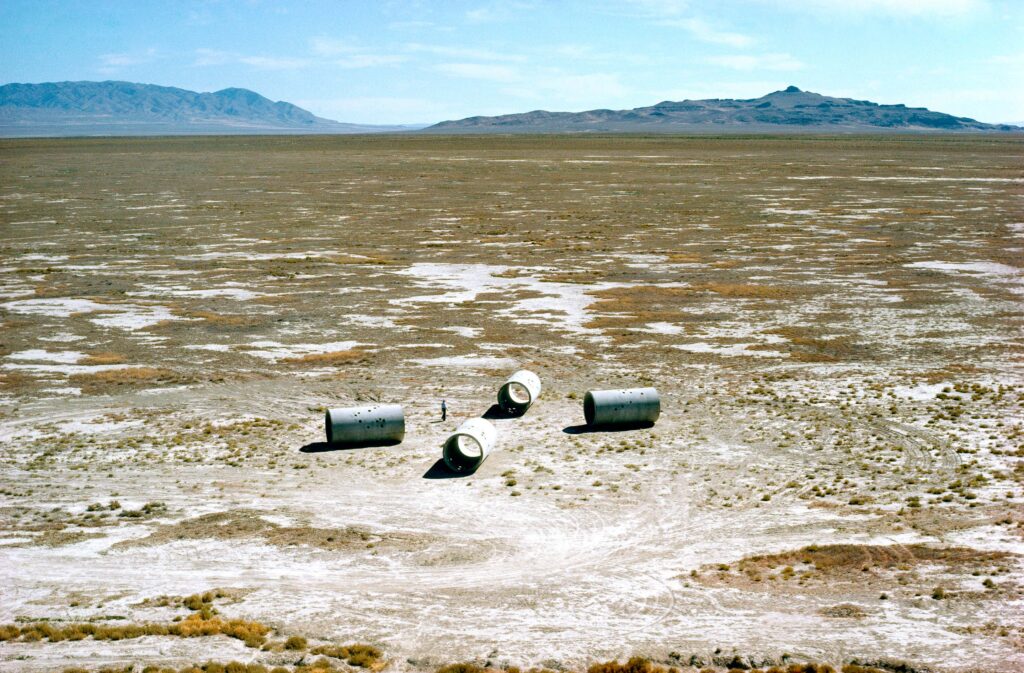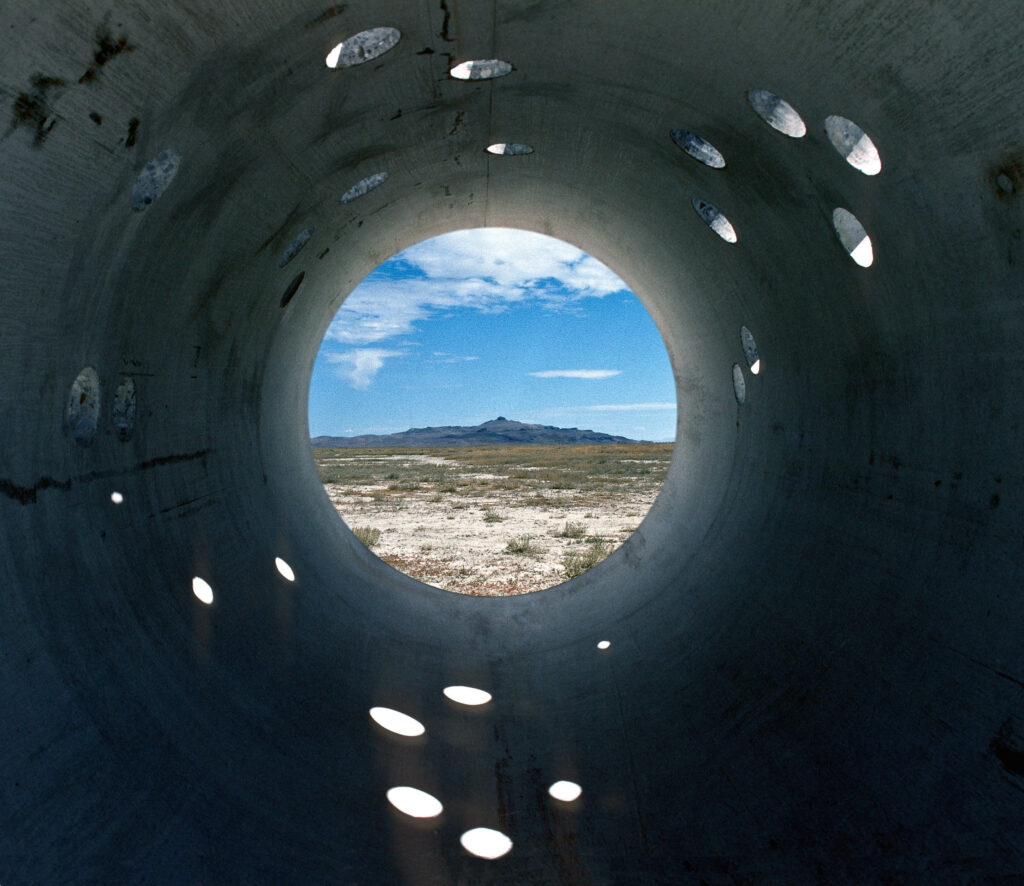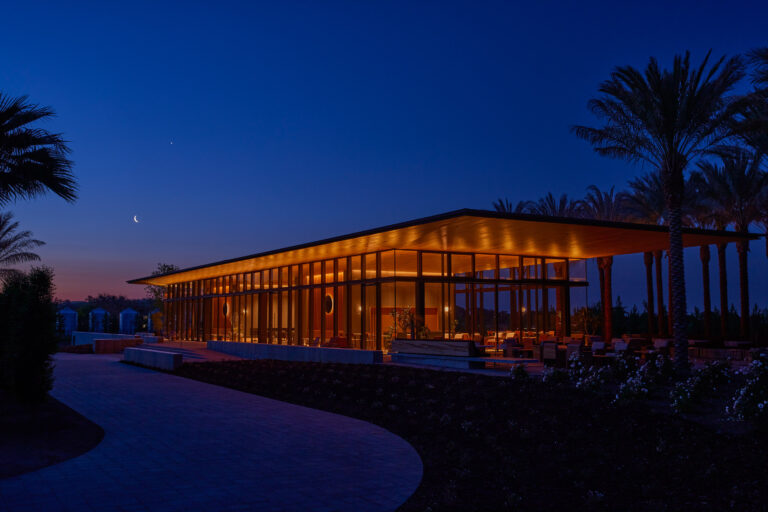Nancy Holt’s Sun Tunnels is a Significant Work of Land Art That Nods to the Vastness of the Universe and the Dimensions of Time
Assume for a moment that the Great Basin Desert in northwestern Utah is not a peculiar place for a New Englander to find herself. The late land artist Nancy Holt, who was originally from Massachusetts and raised in New Jersey, took to this barren, even a touch forbidding, landscape with great and sustaining interest, using it to backdrop her rhapsodic work Sun Tunnels.
Comprised of four concrete tubes arranged in an open X-formation, the work sits on a patch of flat, cracked clay desert floor and is more than what it appears to be—minimalist modern art in the middle of nowhere. But, rather, the work of a visionary whose creations straddled art and environmental activism.
Holt may have named her installation after the sun, but as an artist, she lingered too long in the shadow of her more acclaimed husband, Robert Smithson, a significant figure in the Land Art movement. In the years after Smithson’s sudden death, however, Holt emerged as a force in her own right, completing the career-defining Sun Tunnels in 1976.
In later years she also finished projects in the likes of New York and Finland, but the American West—specifically its openness and expanse—had something of an imaginative chokehold on Holt, appealing to her as a canvas for the eco-minded constructions she created meant to reframe our perception of and connection to nature.
Holt brought her broad appreciation for science (she studied biology at Tufts) to her most reliable gallery, the earth, and saw in the arid environs of Utah how Sun Tunnels would put one closer in consciousness to that which is infinite—time and the universe. Her vision: a life-size instrument for charting sun and stars. It’s a colossus of a viewfinder, to be sure. Each tunnel is punctured with holes of varying sizes, and these openings form a pattern that corresponds to a different constellation: Draco, Perseus, Columba, and Capricorn.
Sun Tunnels is also a coda of a kind to Holt’s experimentations with light, both artificial and natural, and the work is especially transfixing during summer and winter solstice, when the tubes align with the rising and setting sun, putting one into a trance in proportion to the view, which is a magnificence rarely seen.
What is not seen is imagined: Here one considers Holt at the site, calculating a way to express that which is beyond human understanding but crucial to humankind. How to translate this thought into a physical projection? In a personal essay for Artforum, she recalled standing in the desert, “watching the sun rising and setting, keeping time of the earth.”
Disoriented by the emptiness, Holt approached the project as one might a compass, a means of direction. “Sun Tunnels,” she explained, “can exist only in that particular place—the work evolved out of its site.” In the end, it is a monument, in a monumental place, to the cornerstones of monumentality itself.
Photographs: Nancy Holt, Sun Tunnels, 1973–76. Great Basin Desert, Utah. Dia Art Foundation With Support From Holt/Smithson Foundation. © Holt/Smithson Foundation And Dia Art Foundation/Licensed By Vaga At Artists Rights Society (Ars), Ny. Photo: Nancy Holt, Courtesy Holt/Smithson Foundation







